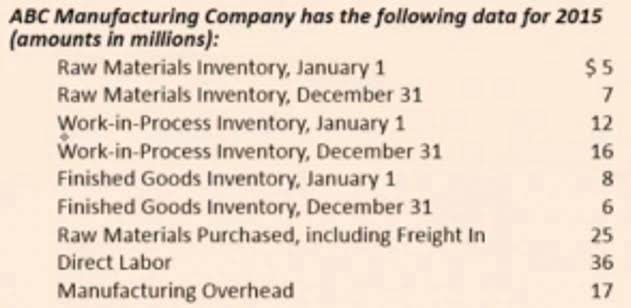
The aggregated allocated costs can then be combined with direct labor and materials costs to ascertain the comprehensive production cost. You would have to do further analysis of this number to determine whether the company is making a profit or needs to reduce costs. Everything flows to the bottom line, and understanding your overhead costs can lead to improved operating efficiencies and a larger profit. Proper cost management and overhead cost awareness can help management and owners ensure they are prepared for whatever the market throws at them. Your direct labor costs from machine operators and assembly line staff are already included in your cost of goods sold.
This is done as an
educated guess based on the actual overhead costs of previous years. Financial costs that fall into the manufacturing overhead
category are comprised of property taxes, audit and legal fees, and insurance
expenses that apply to your manufacturing unit. For instance, correlating machine maintenance costs with downtime may signal preventive measures or equipment upgrades. Examining utility bills can reveal energy wastage patterns, prompting eco-friendly solutions.
Fixed, Variable, and Semi-Variable Overhead Costs
To calculate manufacturing overhead, you need to identify and add up all of the indirect costs incurred during the production process. One of the most significant advancements manufacturing overhead costs include in overhead management is the adoption of integrated systems. These platforms provide a central hub for overseeing all manufacturing operations in real time.
They include equipment depreciation costs during manufacturing, rent of the facility, land used for inventory, and depreciation of the facility. Adding manufacturing overhead expenses to the total costs of products you sell provides a more accurate picture of how to price your goods for consumers. If you only take direct costs into account and do not factor in overhead, you’re more likely to underprice your products and decrease your profit margin overall. Direct machine hours make sense for a facility with a well-automated manufacturing process, while direct labor hours are an ideal allocation base for heavily-staffed operations. Whichever you choose, apply the same formula consistently each quarter to avoid misleading financial statements in the future.
What is Manufacturing Overhead Cost (MOH Cost)?
Utility overhead can vary based on production, with costs lower with slowed production; ramping up when production does. Since utilities are used throughout the business, not just for the production facility, accountants are tasked with allocating the proper amount to overhead as an indirect cost. The calculation result means that 7.25% of sales revenue will need to go toward overhead manufacturing costs. The higher the number, the more important you review your manufacturing process to reveal inefficiencies. This may be the most important, because if you don’t include the indirect costs involved in the manufacturing process, you’ll never have the true cost of manufacturing.
